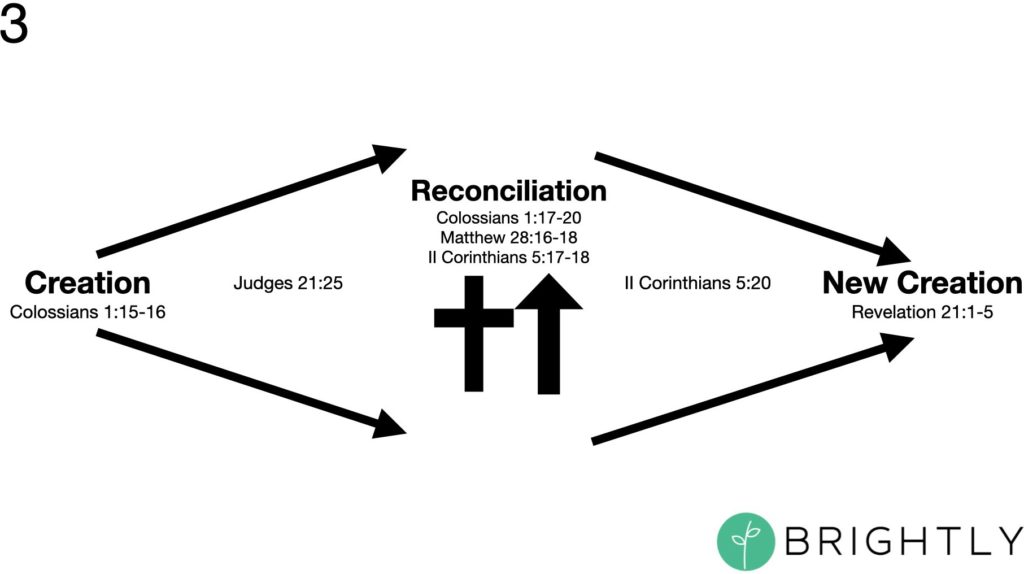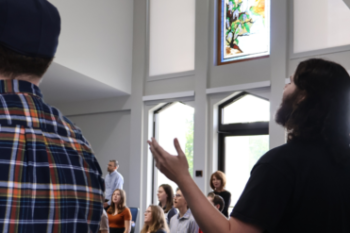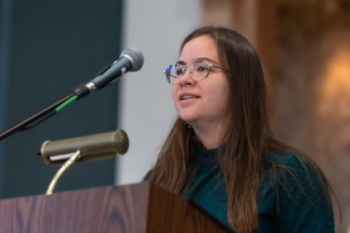Crafting Sermons to Shape Church Culture
Over the past year and half, sermon-planning has taken a backseat to wrestling with weekly changes, complaints about Covid responses, and a general loss of motivation. Many of us feel the need to get back into the groove of creating fabulous messages that contribute to the culture God is shaping among our people and for our world. Let’s start by taking the big-picture elements of preaching and breaking them down into manageable parts for preaching planning and weeky sermon prep.
My system is to strategically implement two “Macro-Tasks” and a 5-phase plan for building effective sermons. Macro-Task #1 is to prayerfully, and in a community of leadership, articulate the kind of church the Spirit is calling your team to build. As one church leader puts it, “Vision leaks.” It is not enough for staff and other church leaders to memorize a statement about where the Spirit is leading your church, to have it written somewhere in someone’s files. We all need reminding. Whether it was calling people “ambassadors,” or challenging them to “bear fruit,” or telling stories about open homes, Paul consistently weaves the culture into his letters through relatable images and practical challenges. So, the first Macro-Task is being able to answer the question, “How will we establish a church culture that produces Jesus-followers?”
Culture-building happens over time, so use your time wisely. Macro-Task #2 is to have an annual plan that includes messages, series or studies that contribute to that culture. Schedule a couple of days every year to get away, even if it’s just working from your back porch, to plan each Sunday. Including other voices, such as partners in ministry, the lectionary, or online tools, can make the process efficient and effective for producing a rich, meaningful year of teachings. Questions to help you craft that plan could be:
• “What Bible topic/book do I personally feel energized to study?”
• “What issues in our culture are currently suffering form a lack of wisdom?”
• “How will we encourage giving and generosity?”
• “When and how will we promote the DNA of our church and church ministries?”
Thematic series and expositional preaching can exist in the same quiver. As you make your annual plan, take on topics while also planning to drill down through a passage or book of the Bible. Disciple-making communities glean both doctrine and wisdom from the teaching of their preaching leader.
Completing both Macro-Tasks helps make your weekly sermon prep far more manageable and enjoyable. Once you’ve taken a step back to establish your aims for your preaching and your church’s preaching year, you’re ready to take a deep dive into each week’s individual message. Here’s a five-phase approach I’ve used to build individual sermons:
Brainstorming
The steps of the Lectio Divina can be truly helpful during brainstorming. Even if it’s just for thirty minutes to an hour, spend some time by yourself or with a preaching team doing the following.
– Read the entire text you’ve selected on your annual plan.
– Consider multiple angles and characters in the text and how they relate to your topic.
– Meditate and contemplate God’s character and nature made evident in the text.
– Articulate actions inspired by the text.
A focused, effective brainstorming session can produce various options for your outline.
Outlining
While the finish products “preach” differently each time, here’s a basic outline I’ve found helpful:
– Series Description: What is our general focus in this series/study?
– The Day’s Focus/Big Idea: What are we talking about today, and why does it matter?
– Understanding the Passage: What needs to be understood about the context of the day’s Bible passage?
– Sub-Points and Challenges: What 2 – 4 teaching points and challenges support the “Big Idea?”
– Conclusion: Summarize the teaching points and restate the Big Idea.
Creative-Infusion
I like to call this “giving people multiple handholds” for grasping the message, This is where the message can really take on a life of its own, so it doesn’t feel like the same “outline” week after week.
Let me offer a few keys to using creativity wisely. First, make sure your best creativity promotes the Big Idea of the day, not a sub-point or tangent. Secondly, consider ambitious elements like a pyramid or drawing you build throughout the message. This is a good way to keep the Big Idea central. Thirdly, bear in mind that this part may require some prop-prep or volunteer recruitment, so doing this phase two weeks before you present is truly helpful. Lastly, be yourself. If you don’t love sports, don’t go looking for a sports reference because you think people want it. If you aren’t a sports fan, invite a coach on stage to present a point, illustration or story.
Word-Smithing
While creativity is a tremendous boost to helping people remember the message, when it comes down to it, people need to remember some words from your message. Whether you are the kind of person who likes to write a verbatim of everything you say or you like to preach from a slim outline, word-smithing certain phrases is vital. Your Big Idea especially needs to be written in a memorable way. Think about the rhythm of how it sounds. Yes, “sounds.” Your people are hearing, not reading your message. Say it out loud. Use alliteration or rhyme. Be as concise as you can without losing the meaning and impact of the idea. I always word-smith the Big Idea, any story I will tell, the sub-points and the challenges.
Presentation-Prep
Never become so prideful in your perceived capability that you think your preaching and your people don’t deserve your practice. Think through presentation skills. What body language am I going to use, and how will I get my body warmed up so I’m not stiff on stage? What vocal inflections are needed, and how will I vocally warm up to do those well? What tempos are needed? Some parts will probably need rapid-fire while other moments may require you to stop completely, letting the moment “sit” in the room before you continue. Great communicators practice.
John Emmert is the founder of Brightly, which creates Biblically-rich, creative sermon outlines that are customizable. Visit https://www.planbrightly.com to see if the Brightly team might benefit your preaching ministry.







